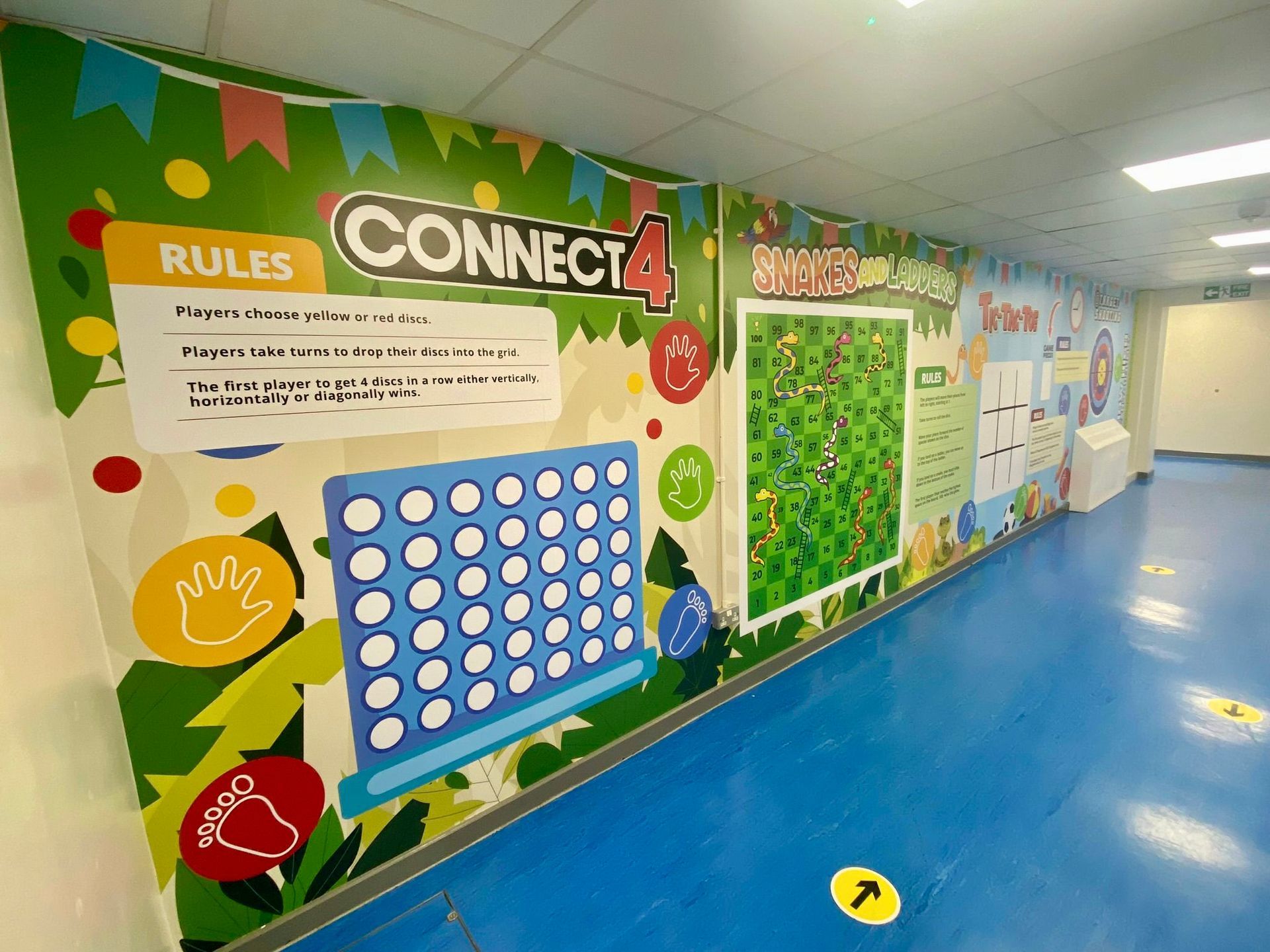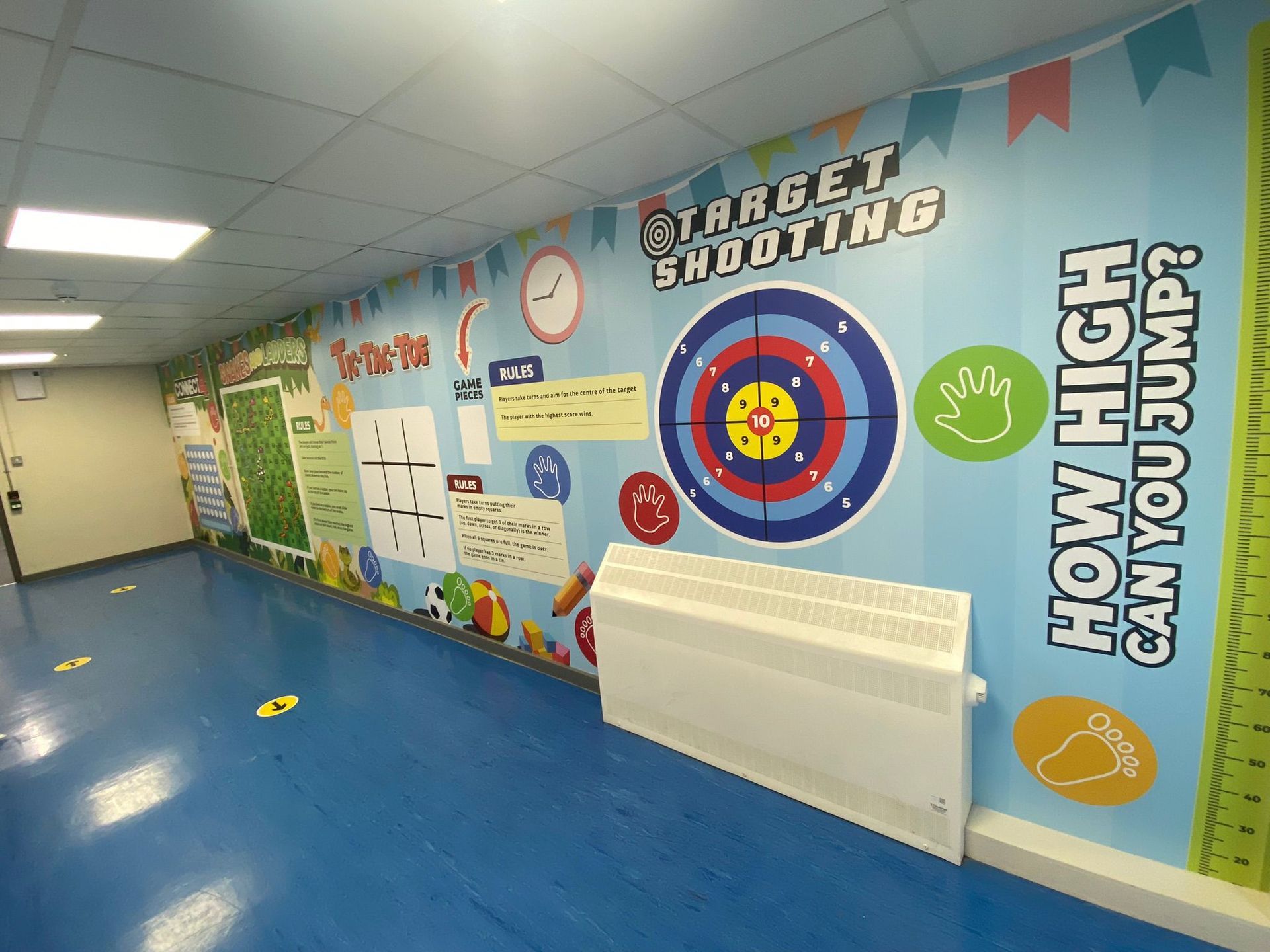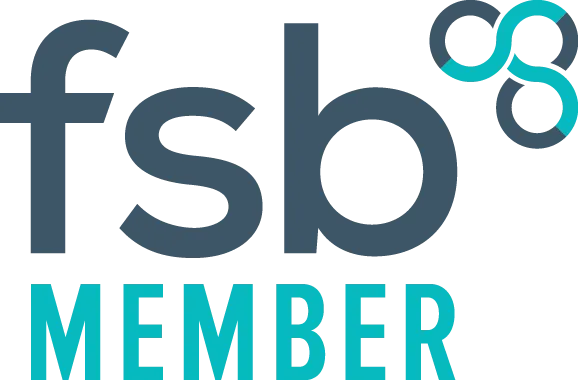Impact on schools-16
Creating wall spaces allows students to engage directly with the art on the walls and enhances the learning environment by emphasising student-centred learning practices.

Crafting Wall Spaces That Are Interactive and Captivating
- Creating wall spaces for students to interact with wall art can enhance the learning environment. Showcase a dedication to interactive and student-focused learning practices. To effectively design and implement engaging interactive wall graphics, follow these steps;
Crucial Design Factors for Captivating Environments.
- Utilise dry-erase boards or paint on the walls to create spaces for students to write down ideas and work together on problem-solving tasks.
- Chalkboard paint adds texture and visual charm to surfaces. It enables students to express their creativity using chalk.
- Add a coat of paint underneath the layer to make walls that can hold magnetic letters and shapes.
- Set up boards for tasks, like putting together words or patterns and designing charts.
Augmented Reality (AR):
- Incorporate augmented reality markers that students can scan using tablets or smartphones to activate animations, videos and interactive content that enlivens the wall graphics.
- Add QR codes that direct to materials such as resources, educational videos and quizzes associated with the wall information.
- Let's set up wall touchscreens to show lessons, educational games and digital stories.
- Set up kiosks featuring software for students to delve deep into various topics.
Interactive Learning Tools and Brain Teasers:
- Let's make some puzzles that students can put together related to geography, history or science.
- Create charts that allow students to engage with the content directly. Think of periodic tables, multiplication grids, and language conjugation boards.

Optimal Positioning for Greater Influence
Let's set up sections on the classroom walls for learning tasks like solving math problems, conducting science experiments, or holding creative writing sessions.
Designate activity corners for subjects with elements tied to the curriculum to promote collaborative work and practical learning experiences.
They are transforming school corridors into engaging learning paths by incorporating games, puzzles, and reality elements for students to interact with during breaks between classes.
Rotate Exhibits Strategically: Utilize hallway segments to rotate displays that align with the curriculum themes to maintain a dynamic and up-to-date experience.
Bring to life murals that invite students to share their creativity and thoughts by adding their artwork and messages.
Collaboration Areas:
Establish designated areas with surfaces for writing and magnetic walls to encourage group work sessions and project teamwork.
Cosy reading corners;
- Design spaces themed around literature experiences where students can converse about books together, immerse themselves in augmented reality stories, and take part in reading challenges.
- Book Review Panels could incorporate platforms for students to share their thoughts and book suggestions to foster a reading community.
Development Approach
The process of designing ;
- Involving students and teachers in the design process ensures that the visuals align with objectives and promote engagement.
- Get the assistance of designers to craft top-notch visuals that captivate and enhance the learning experience.
Selecting the Material;
- Opt for non-toxic, child-safe materials when selecting items to engage with.
- Choose eco alternatives by selecting materials that match the school's dedication to environmental sustainability.
Have a professional handle the installation to guarantee safety and a pleasing outcome while avoiding alignment problems or potential damage concerns.
Make sure to place features at heights that kids of all ages can reach easily.
Remember to clean and maintain your features to ensure they work smoothly and keep the graphics looking new and appealing.
Let's schedule updates to add interactive features and maintain an engaging and lively atmosphere.
Exciting and lively wall spaces that encourage interaction
A whiteboard for science experiments;
- The classroom design plan includes dry-erase paint on most of the walls. This will allow students to draw diagrams of the body and scientific equations and record their observations and theories.
- Influence: Bolster engagement in science classes, fostering a space for students to delve into creativity and showcase their comprehension effectively.
Magnetic Mathematics Wall;
- This magnetic wall is designed for students to engage in math activities. Students can use numbers and symbols to work on math problems and equations or play educational games.
- Enhanced Effectiveness: It enhances the joy of learning math by making it engaging and interactive for students to grasp and actively engage with concepts visually.
The historical corridor of augmented reality (AR).
- A hallway adorned with timelines depicting history and notable figures showcased alongside AR markers that activate content on a device scan—showcasing animated visuals and videos of historical events.
- Students are actively involved in history lessons, which brings events to life and helps them remember better.
By creating a reading nook featuring reality book covers, digital storytelling displays, and a writable wall where I can jot down book reviews and set reading targets.
It encourages a passion for reading. Establishes an environment for students to exchange their literary journeys.
Closing Remarks
Captivating wall graphics in settings like schools or classrooms can craft a vibrant and exciting atmosphere for learning that effectively promotes involvement and student-focused education modalities. These visual elements elevate the school's charm and offer significant educational advantages by transforming learning into an interactive and hands-on experience that captivates students' attention and engagement. This method enables students to establish connections with the content they are studying by sparking curiosity, fostering creativity, and instilling a passion for acquiring knowledge.










